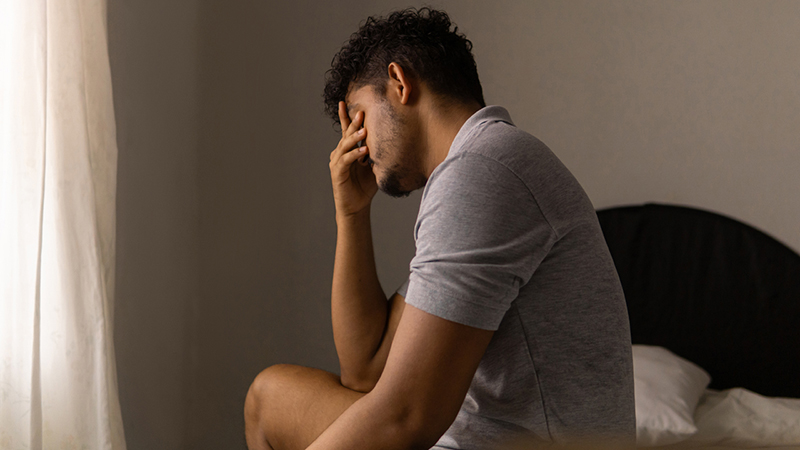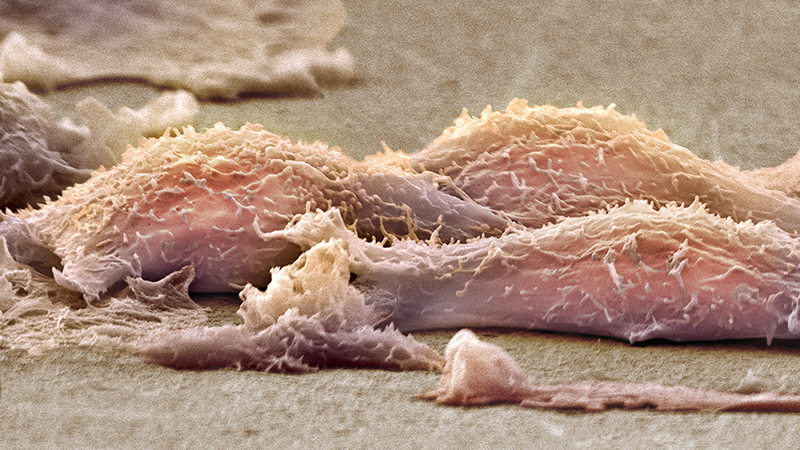Causes for Hair Loss
Published May 2019
How Your Dermatologist Can Help
Most people have as many as 100,000 hairs on their head, shedding 50 to 100 hairs daily. To better understand why hair loss happens, brush up on how hair grows in the first place.
- Hair begins growing from the bottom of the follicle.
- Blood vessels in your scalp allow hair to grow.
- Hair gets pushed up through the skin.
As you get older, some follicles stop growing. However, hair loss can occur from a number of other reasons besides aging, including:
- Changes in hormones
- Illness
- Family history of baldness
- Burns and trauma
- Ringworm
- Vitamin deficiencies, including vitamins B and D
- Iron deficiency (anemia)
These can impact the growth of hair by limiting the nutrients that help support growth. That’s why Maria L. Colavincenzo, MD, a Northwestern Medicine dermatologist who specializes in hair loss, suggests first looking for underlying issues.
“Initial evaluations include some tests to look for underlying triggers, such as thyroid problems or iron deficiency,” says Dr. Colavincenzo. “These are silent causes of hair loss that will have symptoms like shedding after a shower or styling, and the thinning of hair.”
The Most Common Cause of Hair Loss
The most common cause of hair loss is androgenetic alopecia, also referred to as male-pattern baldness. This hereditary condition impacts more than 80 million men and women in the United States. “It’s a point of frustration because you can’t change genetics,” explains Dr. Colavincenzo.
Males with androgenetic alopecia will experience a receding hairline beginning at both temples as well as thinning at the crown of the head. Men may be encouraged to take an oral medication to block testosterone in conjunction with a topical treatment applied to the scalp, which will help stimulate hair growth.
Unlike males, females who have androgenetic alopecia will rarely experience complete baldness. Instead, they experience thinning all over. This can be especially noticeable by a widening, thinning part. For women, the first line of treatment is a topical solution or foam applied to the scalp. This can help stimulate the hair to grow thicker and longer.
Hair Loss and Autoimmune Skin Disease
A person’s genetic make-up, along with external factors such as stress, can result in hair loss as well. Alopecia areata is a common autoimmune skin disease that affects as many as 6.8 million people in the United States. This disease causes the immune system to attack the hair follicles, which can lead to complete hair loss on the scalp (alopecia totalis) and in extreme cases, the entire body (alopecia universalis).
“Your immune system makes a mistake and attacks part of your own body — your hair. It’s like getting a haircut under the skin,” explains Dr. Colavincenzo.
With this type of hair loss, you may experience a patch or patches of bald spots roughly the size of a quarter. The hair loss can be unpredictable: Your hair may grow back, but it could potentially fall out again.
Treatment may include applying a topical cortisone cream, as well as taking an immune-suppressing medication to help the hair grow back.
“When it’s more severe, treatment isn’t as straightforward,” says Dr. Colavincenzo. “Fortunately, there are new and upcoming therapies in clinical trials for future development.”
Skip the Supplements — for Now
Because hair loss is so common, there are a number of supplements and treatments promising to regenerate hair growth. However, Dr. Colavincenzo encourages people to consult with a physician first.
“Not all of these products are scientifically proven to help,” she says. “If you’re experiencing hair loss or thinning, speak to your dermatologist to see if there could be an underlying issue.”
Dermatologists specialize in disorders affecting the skin, hair and nails. Find a dermatologist near you.






